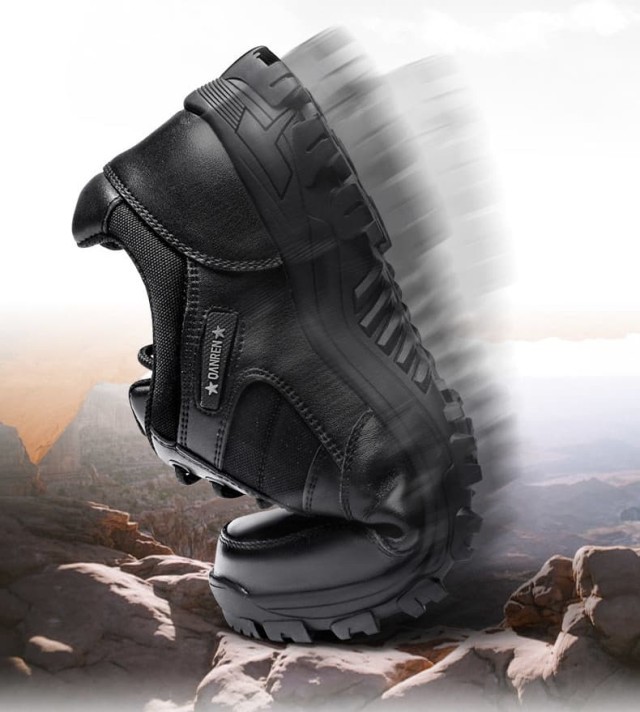Workers across industries face a critical dilemma: finding safety footwear that protects against workplace hazards and sustains comfort during long shifts. This guide breaks down how to evaluate safety shoes beyond basic compliance, using industry standards and ergonomic insights to prevent common injuries.
Evaluating Safety Shoes Beyond the Basics
Safety footwear must address two priorities: hazard protection and all-day comfort. While certifications like ASTM F2413 and EN ISO 20345 ensure baseline safety (e.g., impact-resistant toe caps or puncture-proof soles), they don’t account for job-specific needs or prolonged wear.
Key questions to ask:
- Does the shoe’s protection level match your workplace hazards? (e.g., electrical resistance for electricians vs. slip resistance for food processing workers)
- Can the materials withstand daily abuse? Kevlar midsoles and full-grain leather uppers, for example, resist abrasion better than synthetic alternatives.
Research shows that nearly half of workplace foot injuries occur due to improper footwear selection. Prioritizing both standards and environmental fit reduces this risk significantly.
Material Quality: Decoding Standards and Durability
1. Hazard-Specific Materials
- Metatarsal guards: Essential for construction workers handling heavy materials.
- Chemical-resistant outsoles: Critical in labs or manufacturing plants.
2. Durability Indicators
- Look for reinforced stitching and waterproof membranes if exposed to liquids.
- Avoid seams in high-wear areas (e.g., toe boxes) to prevent premature failure.
Pro Tip: ASTM F2413-certified shoes undergo rigorous testing for impact and compression resistance, but check for supplementary features like heat insulation if working near molten metals.
Comfort Engineering: Ergonomics for 8+ Hour Shifts
Fatigue-related accidents spike when footwear lacks ergonomic design. Here’s what to prioritize:
1. Footbed Support
- Arch contours align the foot naturally, reducing strain.
- Cushioning materials like EVA foam absorb shock on concrete floors.
2. Fit Adjustments
- Feet swell during shifts; opt for a half-size larger or try shoes on in the afternoon.
- A heel elevation under 2 inches prevents Achilles tension.
Case in Point: Warehouse workers wearing shoes with inadequate arch support report 30% higher discomfort rates after 6 hours.
Support and Flexibility: Matching Features to Job Demands
Mobility vs. Stability Trade-offs
- Rigid soles protect against punctures but limit ladder climbing.
- Flexible designs suit healthcare workers who walk miles daily.
Activity-Specific Features
| Job Type | Critical Feature |
|---|---|
| Electricians | Non-conductive soles |
| Landscapers | Deep treads for mud/grasp |
Case Studies: How Proper Evaluation Prevents Injuries
1. Manufacturing Plant Incident
A worker avoided severe crush injuries after steel-toe boots (ASTM-rated) deflected a falling machine part. The shoes’ composite material also prevented conductive burns.
2. Hospital Staff Turnover Reduction
A switch to slip-resistant, cushioned shoes cut nurse absenteeism by 22% due to reduced foot pain.
Ready to Equip Your Team with Smarter Safety Footwear?
3515 combines decades of manufacturing expertise with cutting-edge material science to deliver safety shoes that meet and exceed workplace demands. Whether you’re a distributor sourcing bulk orders or a brand owner seeking custom solutions, our range ensures:
- Tailored protection for industry-specific hazards
- Engineered comfort to keep workers productive
Next Step: [Contact 3515] to discuss your project’s unique requirements—because safety shouldn’t come at the cost of comfort.
Final Thought: The right safety shoe isn’t just PPE; it’s a productivity tool that silently supports every step your workers take.
Related Products
- Puncture-Resistant Velcro Safety Boots for Wholesale & Custom Manufacturing
- Wholesale Customizable Suede Safety Boots - Puncture-Proof with Velcro Closure
- Customizable Anti-Smash Safety Boots for Wholesale & Private Label Manufacturing
- Wholesale Suede Chelsea Safety Boots for Custom & Private Label Manufacturing
- Durable Leather Safety Boots for Wholesale & Custom OEM Manufacturing
Related Articles
- How to Choose Steel Toe Boots: Safety, Comfort, and Job-Specific Features
- How to Reduce Foot Injury Risks in High-Risk Workplaces: 3 Proven Strategies
- Steel-Toe vs. Composite-Toe Boots: How to Choose the Right Safety Footwear for Your Job
- How to Reduce Steel Toe Boot Risks Without Compromising Workplace Safety
- Matching Men’s Work Shoe Safety Technologies to Workplace Hazards



















